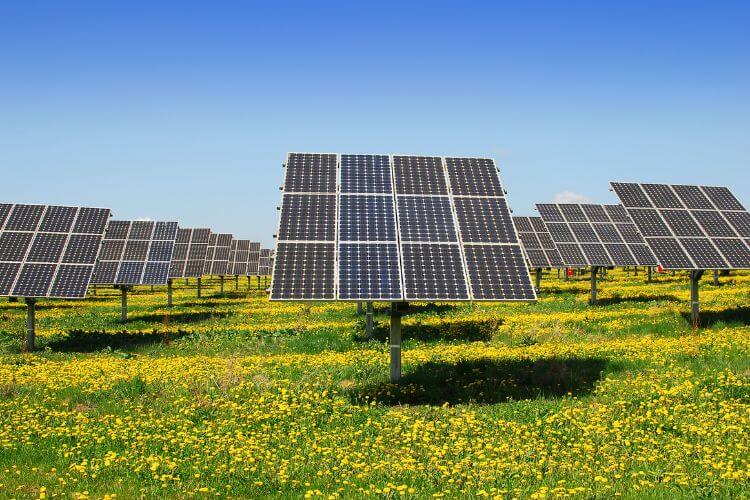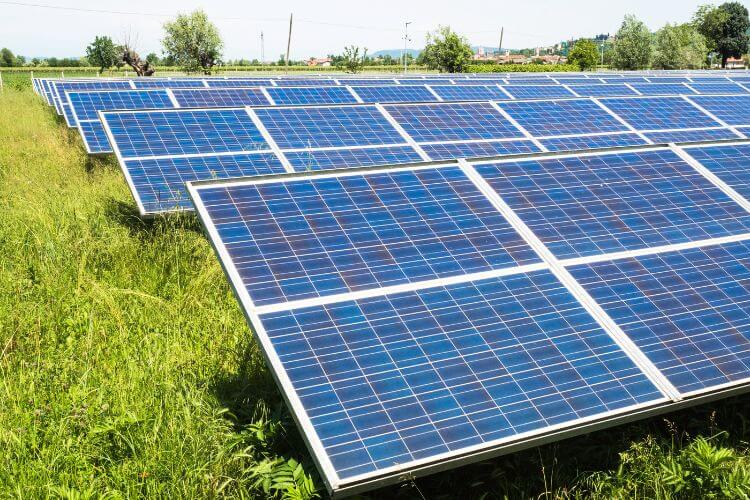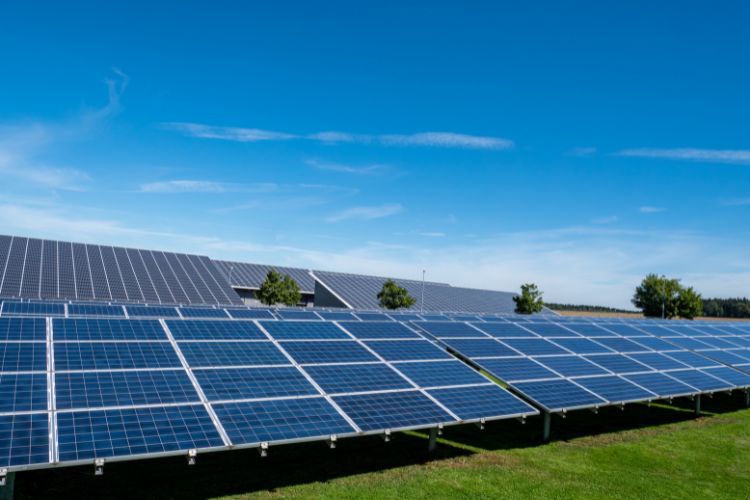
- By greenair-cy
- In Solar Systems
How to build a large-scale PV Park
You’ve probably aware that Cyprus has large-scale PV parks. It’s quite common to see such parks as Cyprus is one of the sunniest countries in the Mediterranean sea and Europe with more than 300 days of sun per year. In the article, we talk about PV parks and we offer a bunch of tips on how to build a large-scale one with maximum yield.
How does a PV park work?
Simply put, a solar park converts solar power into energy.
This energy is typically used for heat and electricity purposes.
Large-scale PV parks can have up to 12,000 solar panels generating around 5.000MWh in a year. Such parks can stretch in rural areas covering 18,000-19,000 sqm.
How does a PV park owner make a profit from their investment?
The way it typically works is you sell the energy you generate through the park to the government’s electricity service. The profit varies from country to country and depends on the regulation and the agreement you sign with the government in the first place.
If you are planning to start your own PV park project, reach out to Green Air for a Free Quote
What maintenance is needed for large-scale photovoltaic parks?
After the installation of a large-scale photovoltaic park is completed, you need to think about maintenance.
Typically, a park doesn’t require heavy maintenance although it’s wise to keep a couple of things in mind to maximise the performance of your park.
Let’s go over a list of things that need to be checked regularly:
- Check that the roof drainage is adequate, that the roof drains are not clogged, and that there are no signs of water pooling near the array.
- Check for ground erosion near the footings of a ground mount system and ensure that any roof leaks (if any) are watertight.
- Confirm that electrical enclosures are only accessible to authorised personnel. Examine the outside of enclosures and the racking system for corrosion.
- Examine the site for cleanliness to ensure that there is no debris in the inverter pad area or elsewhere.
- Inspect the array for any loose hanging wires.
- Examine the array for signs of animal infestation.
What about maintaining the modules of a PV park?
They require regular cleaning on their surfaces to be able to absorb more sunlight and generate more energy.
It’s wise to go over this list and do the activities at least twice a year to extend the lifespan of your park.

Tseri Photovoltaic Park in Cyprus
Did you know that the PV park in Tseri is the largest in Cyprus?
It’s an EAC activity to promote green energy on the Mediterranean island built in an area with maximum sunlight exposure, and its nominal capacity is 3MWp with 12,000 solar panels spread over around 19,000 sqm.
It’s also worth mentioning that it generates 5.000MWh per year avoiding 3,600 tonnes of CO2 emissions into the atmosphere.
What are the aspects that affect the performance of your PV park project
Let’s go over several aspects that play a role in how panels you can install in your PV park.
Quality of solar panels
The quality of solar panels that you choose for your project has an effect on the performance of your solar park. Going for slightly more expensive but high-quality panels can increase the performance and durability of your project which leads to more generated energy and higher profit. It’s also wise to speak with a solar panel expert with extensive experience in this field to guide you.
Orientation
The optimal solar panel inclination will vary depending on the month and province. Changing the inclination of the solar panels every month is expensive; thus, it is best to use an optimal global inclination.
In Cyprus, for example, the optimal orientation and inclination are South and 28 °- 30 °, respectively. This practically means that any deviation from the above parameters translates into less sunlight absorbed by your solar panels.
Material of solar panels
The majority of solar panels have as their main material one of the below:
- monocrystalline
- polycrystalline
- amorphous
Each one of them has a different yield. For example, the monocrystalline one is between 18 and 23%, the polycrystalline is between 14% and 17%, while the amorphous one ranges from 8-12%.
The amorphous panels aren’t as pricey as the other too they take up more space and need many more modules to generate the same amount of energy as the other two types.

What is the difference between a solar park and a solar farm?
You’ve probably come across both terms and you wonder ‘what’s the difference between the two’?
They are similar terms and they’re often used interchangeably. In fact, a solar farm is also called a solar park, solar garden, solar power station or photovoltaic (PV).
Is there any difference between the two?
Normally, a solar park refers to either a project with panels installed on a roof of a building or on the ground of a field whereas a solar farm refers to only projects with a solar panel on the ground in a rural area. Some solar farms are also actual agricultural farms, with solar panels replacing crops in some fields or solar panels integrated into the agricultural land. Solar farms can also be built on abandoned industrial sites or even capped landfills.
Where is the biggest solar park?
Bhadla Solar Park is the world’s largest solar farm. The facility, which covers 56.6 sqkm, is located in Rajasthan, India.
The solar farm has a capacity of 2.25 GW and a total investment of more than $1.3 billion.
The was completed in 2017 and contains over 10 million solar panels. It was built in 4 stages as part of the Ministry of New and Renewable Energy (MNRE) scheme, in accordance with the Rajasthan Solar Energy Policy, 2011.
The plant uses the dry heat of Rajasthan, India’s desert state, to generate clean renewable energy.
Which country has the most solar farms?
China’s solar prowess is mind-boggling. With 340 GW, the country is the world’s largest producer of solar energy.
The country installed more than 30.88 GW of solar PV systems in the first six months of 2022. Plus, it has set a target of installing 108 GW of solar power this year.
The country is also the largest producer of solar equipment. Since 2011, China has reportedly invested more than $50 billion USD in new PV supply capacity. This figure is ten times greater than the amount invested in the same industry by the entire continent of Europe.
China accounts for more than 80% of all solar panel manufacturing phases. In China, subsidy-free solar power is now cheaper than coal.
Here are the top 5 countries with the majority of solar farms:
- China
- USA
- Japan
- Germany
- India
